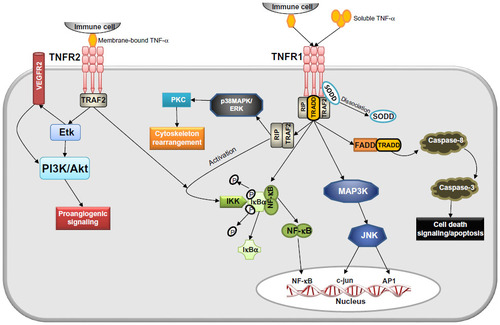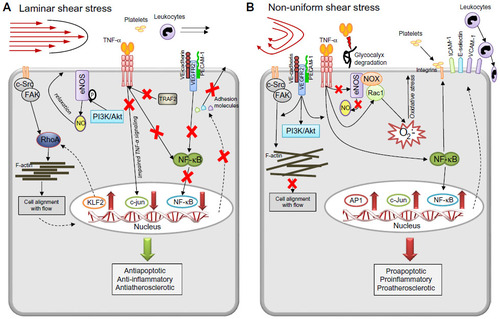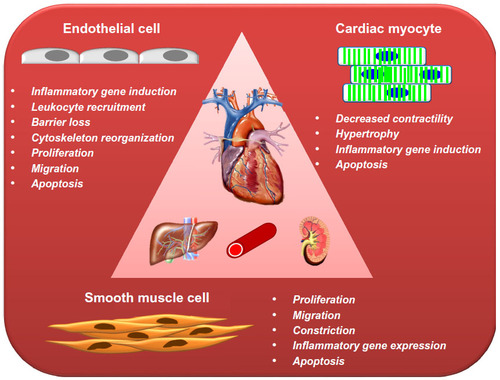Figures & data
Figure 1 TNF-α-initiated signal transduction. TNF-α (soluble or membrane-bound) activates two different TNF-receptors, ie, TNFR1 and TNFR2. After binding of TNF-α, TNFR1 recruits distinct adaptor molecules (TRAF2, TRADD) at the intracellular death domain, thereby activating three major signaling pathways: NF-κB-signaling, MAPK/C-Jun-signaling, and caspase/apoptotic signaling. TNFR2 activation by membrane-bound TNF-α leads to activation of PI3K/Akt and proangiogenic pathways (eg, VEGF/VEGFR2), and is furthermore able to interfere with NF-κB signaling.

Figure 2 Shear stress dependency of TNF-α signaling in endothelial cells. (A) Laminar shear stress prevents proinflammatory activation of endothelial cells by TNF-α by inhibiting NF-κB signaling (eg, preventing expression of adhesion molecules and inducing production of NO) and therefore results in a quiescent endothelial phenotype. (B) Proatherogenic non-uniform shear stress synergistically enhances proinflammatory TNF-α signaling by activating NF-κB, AP-1, or c-Jun, leading to endothelial dysfunction characterized by increased permeability, enhanced oxidative stress, lack of cell alignment with flow and adhesion molecule expression, followed by adhesion of leukocytes to the activated endothelium.


